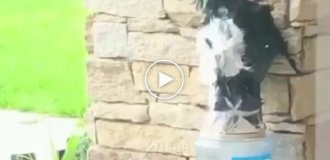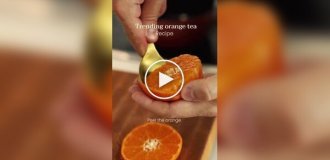It is impossible to imagine a cozy home without indoor plants. They not only decorate the space, but also perform an important function in purifying the air and enriching it with oxygen.
However, we should not forget that not all house plants are as safe as we are used to thinking about them.
1. Azalea

Azalea is called the queen of house plants for its extraordinary beauty and whimsicality.
But azalea is also a dangerous “queen”, the leaves of which contain a toxic substance, glycoside.
If this substance enters the body, it causes poisoning, and subsequently arrhythmia and death. However, it is worth noting that death is caused only by the consumption of a significant amount of the glycoside.
In any case, it is necessary to place pots with this flower in places inaccessible to children and pets.
2. Dieffenbachia

The popular house plant Dieffenbachia can be found in many apartments, offices, hospitals and even in kindergartens. The last fact causes extreme bewilderment among knowledgeable people, since Dieffenbachia, as a typical representative of the araceae family, is very poisonous.
The poison is contained in all green parts of the plant and can cause a severe allergic reaction, redness of the skin and tearing even in an adult. That is why it is necessary to carefully protect children and animals from contact with this beautiful but dangerous representative of the flora.
3. Primrose, or primrose

It seems that there is nothing better than decorating the window sill in a children's room with these small bushes with velvety leaves and bright flowers.
But under no circumstances should primrose be placed near children: during flowering, primrose actively releases toxic substances - alkaloids, which can cause nausea and dizziness. The effect becomes more noticeable as the number of flowering plants in the room increases.
Primrose leaves are also dangerous, the hairs of which contain poison that can cause an allergic reaction.
4. Ivy

Ivy is a popular plant used to decorate both indoor spaces and building facades.
However, few people know that the fruits, as well as the leaves of this evergreen shrub, can be very dangerous.
Indoor ivy usually does not bear fruit, but the leaves can cause poisoning for cats that are attracted to the lush greenery of the plant.
5. Monstera

Thanks to its impressive size, the monstera can most often be seen in public places. However, this plant is not uncommon in ordinary apartments.
If you decide to keep this “monster” in your home, we advise you to remember that its leaves contain an extremely toxic substance, which, if it comes into contact with mucous membranes, can cause a strong toxic reaction.
Ingestion of monstera leaves can lead to serious poisoning requiring medical intervention.
6. Cyclamen, or Alpine violet

Alpine violet is quite often found on the windowsills of flower lovers. This is a plant with delicate flowers that exude a pleasant aroma.
Only the tubers containing the strongest poison are dangerous in this flower. Make sure pets don't eat them and enjoy the beautiful flowers in your home.
7. Trichocereus

Trichocereus belongs to the cactus family, but unlike other representatives of the “hedgehog-like”, it is dangerous not only for its spines.
The substances contained in Trichocereus can not only cause severe hallucinations, but also lead to paralysis of the central nervous system.
8. Brunfelsia

This plant with beautiful lilac flowers and a pleasant smell is most common in America and Europe.
All you need to know about brunfelsia is that all its parts contain a poison that has a neurotoxic effect, and also that some types of brunfelsia are added to the traditional drink of the Amazon tribes, used to “communicate with spirits.”
9. Clivia

Clivia is a very beautiful houseplant with bright flowers grouped in an umbel. Despite all its attractiveness, clivia contains a strong poison, which in large doses can cause paralysis.
When working with this plant, special care must be taken to ensure that children do not come into contact with it.
10. Ficus

Ficus is not the most dangerous plant on our list. This representative of the domestic flora is dangerous solely for the reason that it is a strong allergen. You must also be careful when coming into contact with the juice of this plant - it can cause both skin irritation and burns.
11. Pachypodium Lamera

This plant resembles both a palm tree and a cactus. Flower growers like to call it the Madagascar palm for its thick trunk and lush foliage. Pachypodium is strongly not recommended for placement in children's rooms due to the high toxicity of its juice, as well as the spines located along the entire length of the trunk.
When working with the plant, be sure to wear gloves to avoid the unpleasant consequences of juice getting on your skin, and also wash your hands thoroughly after “communicating” with this flower.
12. Brovallia
Brovallia is a small shrub plant belonging to the nightshade family that blooms with white, purple and blue flowers.
Like its relatives - belladonna and mandrake - brovallia is extremely poisonous: you must wash your hands thoroughly after caring for the plant, and also place flower pots out of the reach of children and pets.
13. Schefflera
Schefflera is a fairly large shrub plant that has recently become widespread in home floriculture.
Despite the fact that Schefflera can be characterized as a slightly poisonous plant, all its parts contain poison that can cause skin irritation, as well as severe poisoning if ingested.
14. Gloriosa

Gloriosa attracts with its ability to change the shade of flowers during the flowering period.
However, do not underestimate this representative of tropical forest vines - all parts of the plant contain a strong poison that can be fatal if ingested.
Fortunately, this dangerous substance is not released into the air, so admiring the plant from a short distance is quite safe.
15. Euphorbia


The Euphorbiaceae family can often be found in gardeners' homes. The most beautiful representative is the beautiful euphorbia, or poinsettia, which is also called the Star of Bethlehem due to its ability to bloom at Catholic Christmas.
Despite their attractive appearance, all plants of the euphorbia family are among the most poisonous due to the milky sap they contain.
If it comes into contact with the skin, this white or transparent juice can cause burns, ulcers and inflammation; if consumed internally, it can cause severe poisoning. The consequence of contact with the eyes can be complete loss of vision.
If there are small children in the house, then it is better to give such plants into good hands.





















